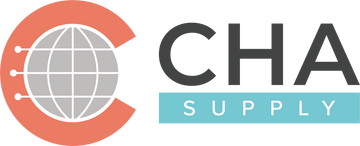3 Procurement Myths That Hold Teams Back
Procurement is one of the most misunderstood parts of business operations. Many people still think it is just about placing orders or cutting costs. Procurement actually plays a strategic role in the success of organizations.
Throughout the whole supply chain, it guarantees effectiveness, dependability, and compliance. Saving money is not the only benefit of having a great procurement team. It lowers risks, enhances business continuity, avoids expensive delays, and even stimulates creativity.
In spite of this, antiquated notions about procurement persist. They covertly result in missed opportunities, wasteful spending, and inefficiency. Let's examine three of the most prevalent procurement myths and their underlying realities.
Myth #1: Procurement is all about getting the lowest price
Negotiating the lowest price appears to be a success at first glance. Who doesn't want to save money, after all? However, concentrating only on price may lead to more issues rather than solutions.
The fact is that obtaining the best deal is not the aim of procurement. Getting the best deal is the goal. On paper, the lowest bid could seem attractive, but there are frequently hidden expenses involved. A low-cost supplier may compromise on quality.
They might also provide subpar customer service or skip delivery deadlines. Production can be halted, customer contracts can be broken, and your reputation can be damaged by a single shipment delay or a faulty batch. Strategic procurement considers ownership costs. This entails taking into account every expense related to a good or service over the course of its life.
This includes the purchase price, reliability, maintenance, and downtime. Long-term savings from a reliable supplier who regularly delivers on schedule are frequently significantly greater than those from a less expensive one who causes delays. Long-term relationships and trust are important to astute procurement professionals.
Myth #2: Our current suppliers are “good enough”

It is simple to stay with what is familiar. Why switch if a provider has been dependable for many years? Efficiency, creativity, and profitability can all be weakened over time by complacency in supplier management.
The reality is that vendors innovate, markets change, and technology develops. The wisest course of action now might not be the same as it was five years ago. Better digital tools, greener materials, or faster lead times could be offered by new rivals. These tools facilitate reporting and communication.
Your procurement staff may be passing up chances for improvement if performance isn't routinely reviewed. Regular supplier assessments emphasize innovation, service responsiveness, quality consistency, and delivery dependability. They aid in identifying areas for improvement.
Comparing your current partners to the market guarantees you get the best deal, even if you decide to stick with them.
Diversifying your supplier base also reduces risk. Over-reliance on one or two suppliers weakens your company. Price increases, shortages, or delays may result from it. Resilience is increased by considering possibilities in advance.
When you're under pressure, it also helps you make better decisions.
"Good enough" could be enough right now, but in the fast-paced world of today, it could be dangerous. Procurement teams that are smart maintain their flexibility. They regularly review, test, and improve their supplier networks.
Myth #3: Technology does not make a big difference in procurement
Some organizations still see procurement technology as optional. They use spreadsheets, email threads, and manual approvals. It’s what they’ve always done. In today’s data-driven business world, however, manual processes cannot keep up. They are slow and prone to errors. Plus, they provide little visibility into the supply chain.
The truth: Modern procurement technology is not a luxury. It gives you a competitive edge.
Procurement processes are changing due to automation, digital platforms, and analytics driven by artificial intelligence. They assist teams in transitioning from tactical to strategic and from reactive to proactive.
Creating purchase orders and matching invoices are examples of routine administrative chores that can be automated. This frees up time for strategic tasks like market research, supplier strategy, and risk management.
Procurement experts may observe how suppliers perform with the use of real-time data and analytics. They also draw attention to market trends and possible hazards. Teams may take swift action and prevent expensive shocks by using these technologies to identify impending disruptions before they happen.
Additionally, cloud-based platforms improve cooperation and transparency. Contracts, approvals, and budgets can all be shared by teams. This improves responsibility, removes obstacles, and keeps them in line.
Procurement teams can work more quickly, intelligently, and confidently thanks to technology. It is no longer an optional enhancement but rather a fundamental component of creating flexible, robust supply networks.
The Main Takeaway

Procurement myths do not just limit efficiency. They put entire supply chains at risk. Holding onto antiquated ideas can cause businesses to miss out on opportunities for innovation, cost reductions, and improved collaborations.
Addressing these misunderstandings allows procurement teams to:
- Develop more robust and dependable supplier ties
- Lower operational risks and enhance continuity
- Discover undiscovered cost savings by using strategic sourcing.
- Obtain control and visibility with contemporary procurement systems.
- Encourage sustained innovation and growth
The best procurement teams do more than reduce expenses. They create a strategic advantage. They embrace technology, consider factors other than price, and keep improving their business practices.
Procurement teams transform from order takers to strategic partners when they dispel long-held misconceptions. They influence the future of organizational success, foster innovation, and lower risk.
Outdated procurement processes could be costing you more than you think.
💡Let’s uncover hidden opportunities in your supply chain. Connect with our team today to see how strategic sourcing can deliver measurable impact.









Leave a comment